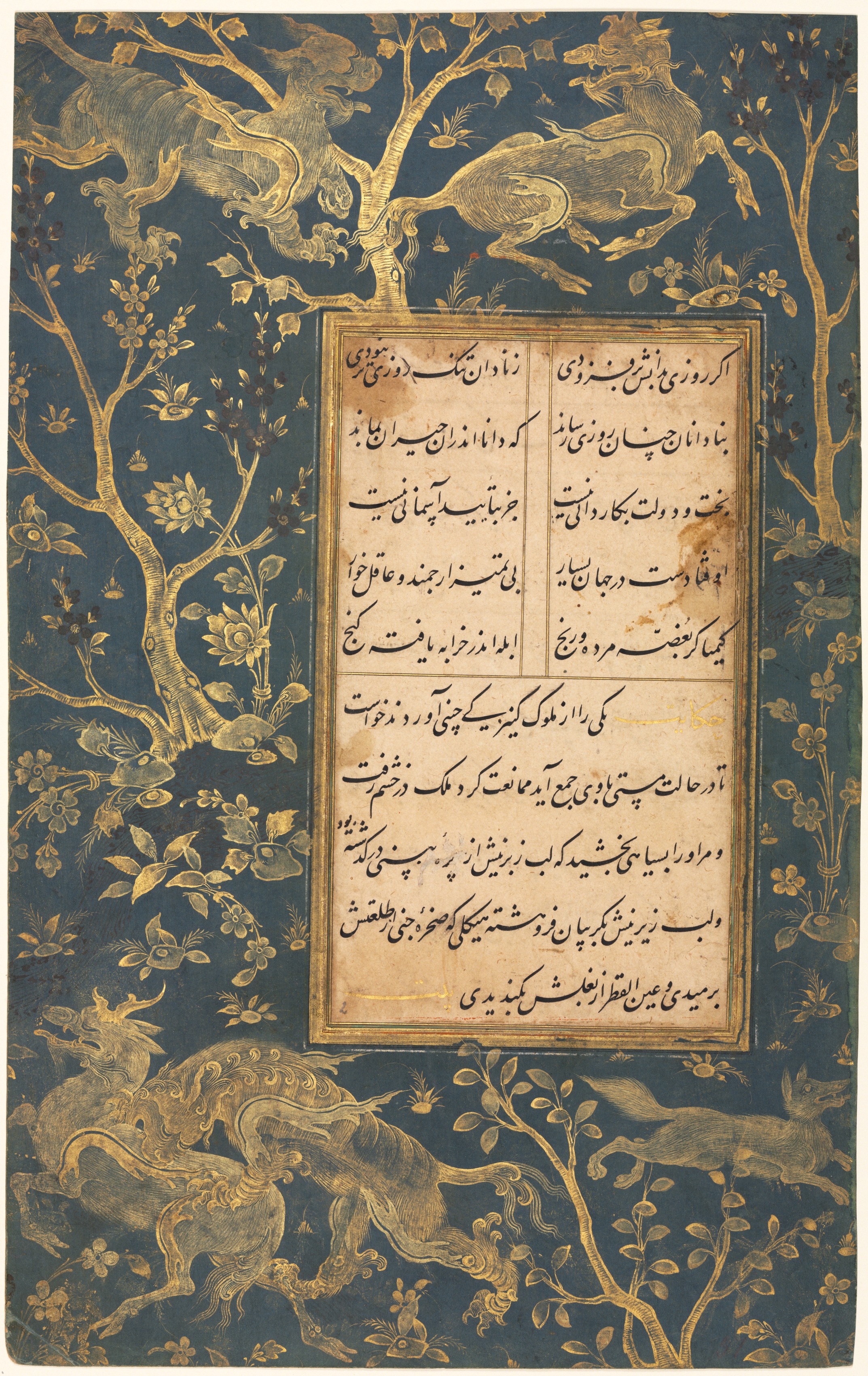The Cleveland Museum of Art
Collection Online as of April 19, 2024

Illuminated Folio from a Gulistan (Rose Garden) of Sa'di (c. 1213–1291)
calligraphy: c. 1475–1500; border: c. 1550
(Iranian, 1430–1520)
Location: not on view
Did You Know?
The book’s name means “rose garden” in Persian; just as a rose garden is a collection of flowers, the contents are a collection of anecdotes.Description
The border scene is set in a magical forest bursting with blossoms. At the top, a winged lion chases a winged deer, who is caught in the bottom border. The imagery of a lion biting down on its prey dates from the Achaemenid period in Iran (550–330 BCE) and references the valor of the king. A fox scurries off to the right.The verse is written in the Persian language using nastaliq script. Sultan ‘Ali Mashadi was widely renowned for perfecting the nastaliq script, and his calligraphy was a model for many followers across the Islamic world.
- ?–2006William Kelly Simpson [1928–2017], Katonah, NY, given to the Cleveland Museum of Art2006–The Cleveland Museum of Art, Cleveland, OH
- Canby, Sheila R. The Golden Age of Persian Art: 1501-1722. London: British Museum, 2008. 58-59
- {{cite web|title=Illuminated Folio from a Gulistan (Rose Garden) of Sa'di (c. 1213–1291)|url=false|author=Sultan 'Ali al-Mashadi|year=calligraphy: c. 1475–1500; border: c. 1550|access-date=19 April 2024|publisher=Cleveland Museum of Art}}
Source URL:
https://www.clevelandart.org/art/2006.147